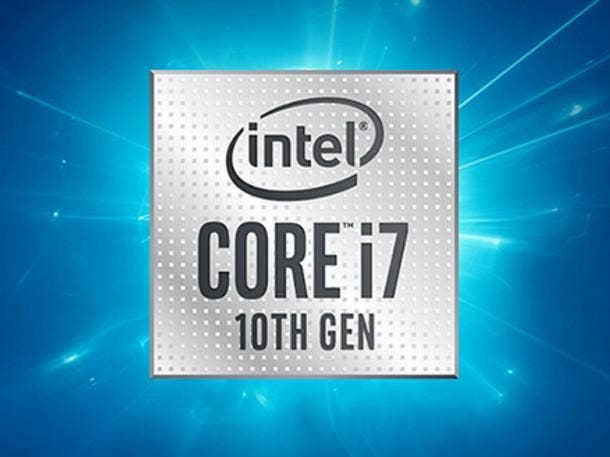Intel Forecasts 'More Normalized' CPU Supply In 2nd Half Of 2020
PC chip supply ‘remains tight’ and some server processors have also been impacted, but the company has gotten ‘maniacal’ about raising production levels, CEO Bob Swan says.

Intel's CPU shortage may not drag on past the first half of the year, with top company executives saying that boosted production should bring relief by the time the second half gets underway.
Due to greater-than-expected demand for PC chips, the company began seeing supply constraints for the CPUs in mid-2018--and the issue has persisted. Reports have suggested that Intel's data center lines have recently been affected by shortages, as well.
[Related: Intel Ramps Up Foundries As CPU Supply 'Remains Extremely Tight']
When it comes to meeting demand for server processors, Intel CEO Bob Swan said Thursday that the company is in "pretty good shape" but is "not perfect."
Santa Clara, Calif.-based Intel saw 19-percent growth in its Data Center Group during the fourth quarter of 2019, ended Dec. 28, and the strong results have "depleted our inventory level," Swan said during Intel's quarterly call with analysts.
With "that kind of spike in demand [in data center], we're not perfect across all products or all SKUs," he said.
But for "server CPUs, we really prioritize that and try to put ourselves in a position where we're not constrained. And we're in pretty good shape," Swan said.
According to a report in The Register this week, Hewlett Packard Enterprise is expecting that a shortage of Intel's second-generation Xeon Scalable Cascade Lake processors will run through the rest of the year.
George Davis, Intel's CFO, suggested that a resolution of the issue across all of Intel's businesses should be coming by the second half of 2020 as a result of the boost in production capacity.
"In the second half of the year we would expect to be able to bring both our server products and, most importantly, our PC products back to a more normalized inventory level," Davis said.
Intel's capital investment to expand production will result in 25 percent higher wafer capacity in 2020, Swan said.
When it comes to supply constraints, "we are maniacal about eliminating those, so that we can meet customer demand and they don't have to worry about it," he said.
Executives from PC makers HP Inc. and Lenovo have told CRN in recent weeks that they’ve continued to see shortfalls from Intel that have constrained their growth.
"We have left demand unserviced as a result of some of the Intel shortages," said Matthew Zielinski, president of Lenovo's North America Intelligent Devices Group, earlier this month. He added that there is a "good possibility" the No. 1 global PC maker will expand its products that use chips from Intel rival AMD this year.
Swan acknowledged Thursday that "demand has continued to outpace PC supply, and supply remains tight in our PC business."
Still, Intel's Client Computing Group saw a revenue increase of 2 percent during the fourth quarter to $10.01 billion. That was up from $9.82 billion during the same period a year earlier, and followed a 5-percent year-over-year decline during the third quarter of 2019.
Sales of processors for desktop PCs were up 2 percent, though notebook processors were down 1 percent.
The company is seeing "excellent momentum" for its first 10-nanometer mobile CPU, Ice Lake, with 44 system designs now shipping, Swan said.
Intel's data-centric businesses, which includes the Data Center Group and the Internet of Things Group, saw significantly stronger performance during Q4 as revenue climbed 15 percent.
The Data Center Group led the way with its 19-percent revenue growth, reaching $7.21 billion, up from $6.07 billion the year before. The segment saw major demand from cloud service providers during the quarter, and the data center results were bolstered by "very strong" demand for Intel's second-gen Xeon Scalable processors, Swan said. The 19-percent growth compares to Intel's year-over-year results in previous quarters--of 4-percent growth in Q3 of 2019 and an 11-percent decline in Q2.
Also during the fourth quarter, Intel's IoT Group rose 2 percent while the Non-Volatile Memory Solutions Group increased 10 percent. The Programmable Solutions Group declined by 17 percent.
Overall, Intel's fourth-quarter revenue was $20.21 billion, up 8 percent from $18.66 billion during the same period of 2018.
The company's GAAP quarterly earnings came in at $1.58 per share, compared to $1.12 per share during the same quarter the year before.
For the full year 2019, Intel said it generated record revenue of $72 billion, up 2 percent from 2018. GAAP earnings totaled $4.71 per share in 2019, up from $4.48 per share a year earlier.
For the 2020 outlook, Intel is forecasting revenue to grow 2 percent for the year, with the data-centric businesses climbing by "high single digits.” The PC business is expected to be down low single digits this year, executives said, as a result of decreasing Windows 10 PC refreshes and the transition to 5G modems--a business that Intel exited last year through selling its 5G division to Apple.
Shares of Intel rose 5.42 percent to $66.75 in after-hours trading on Thursday.